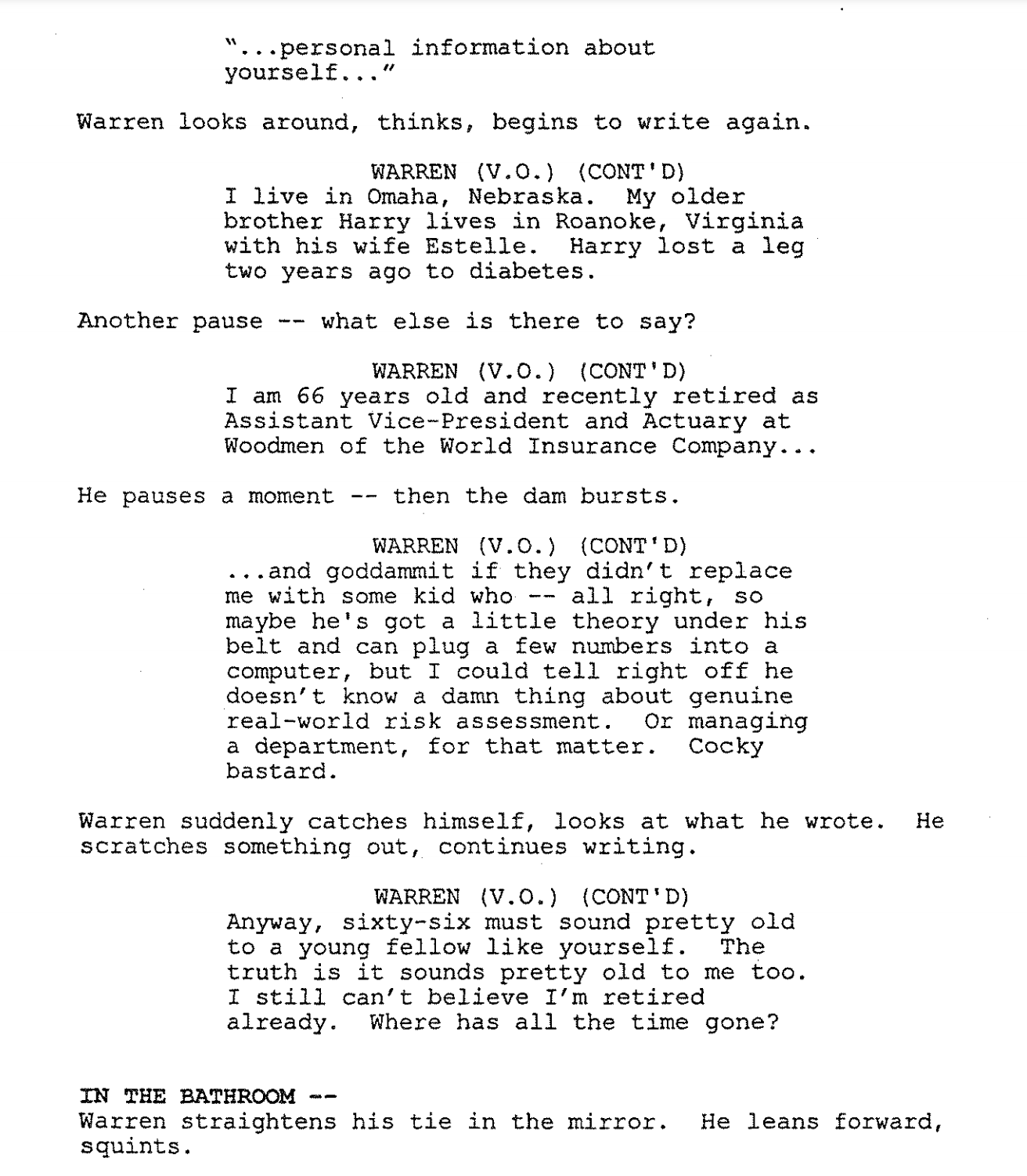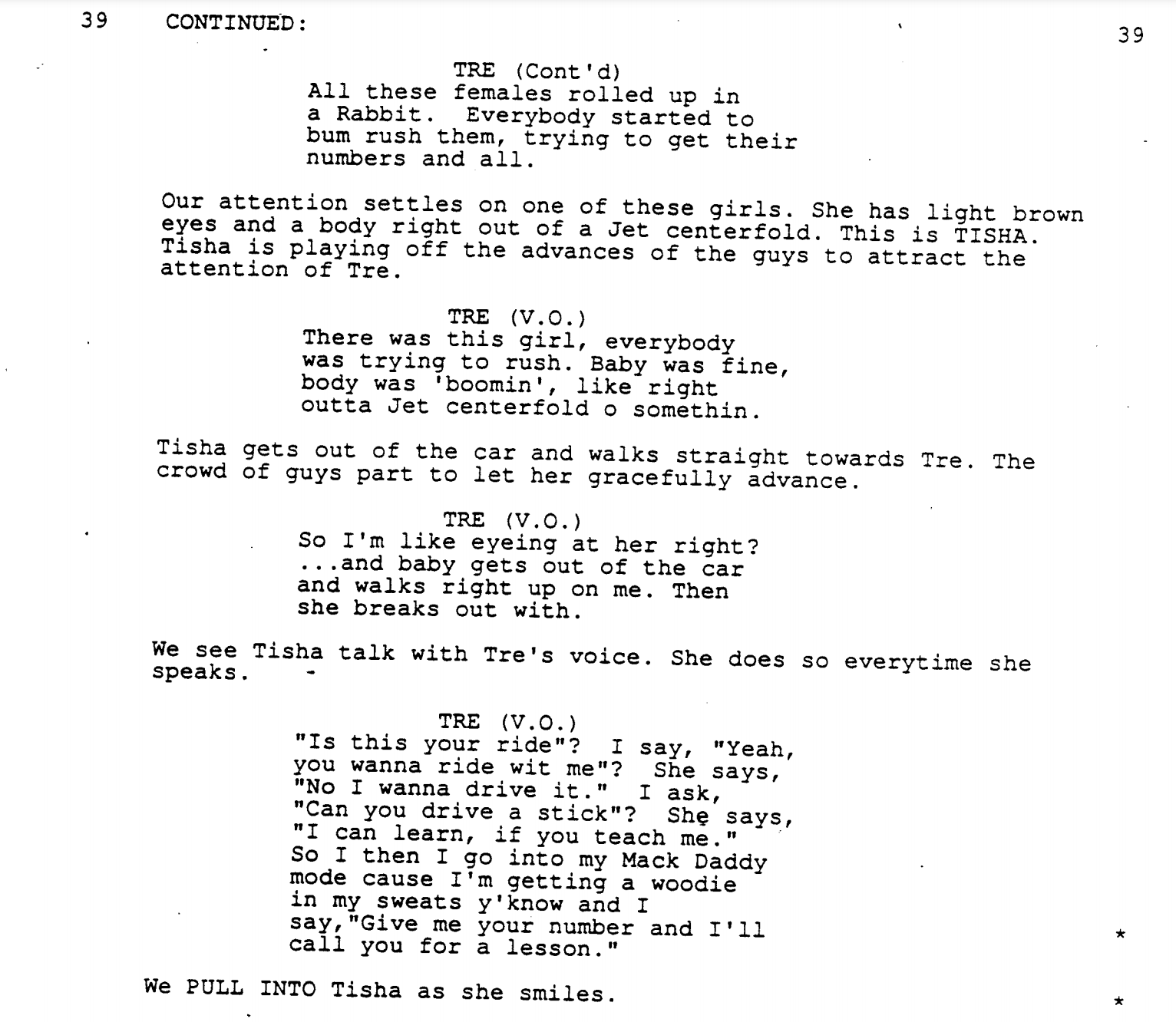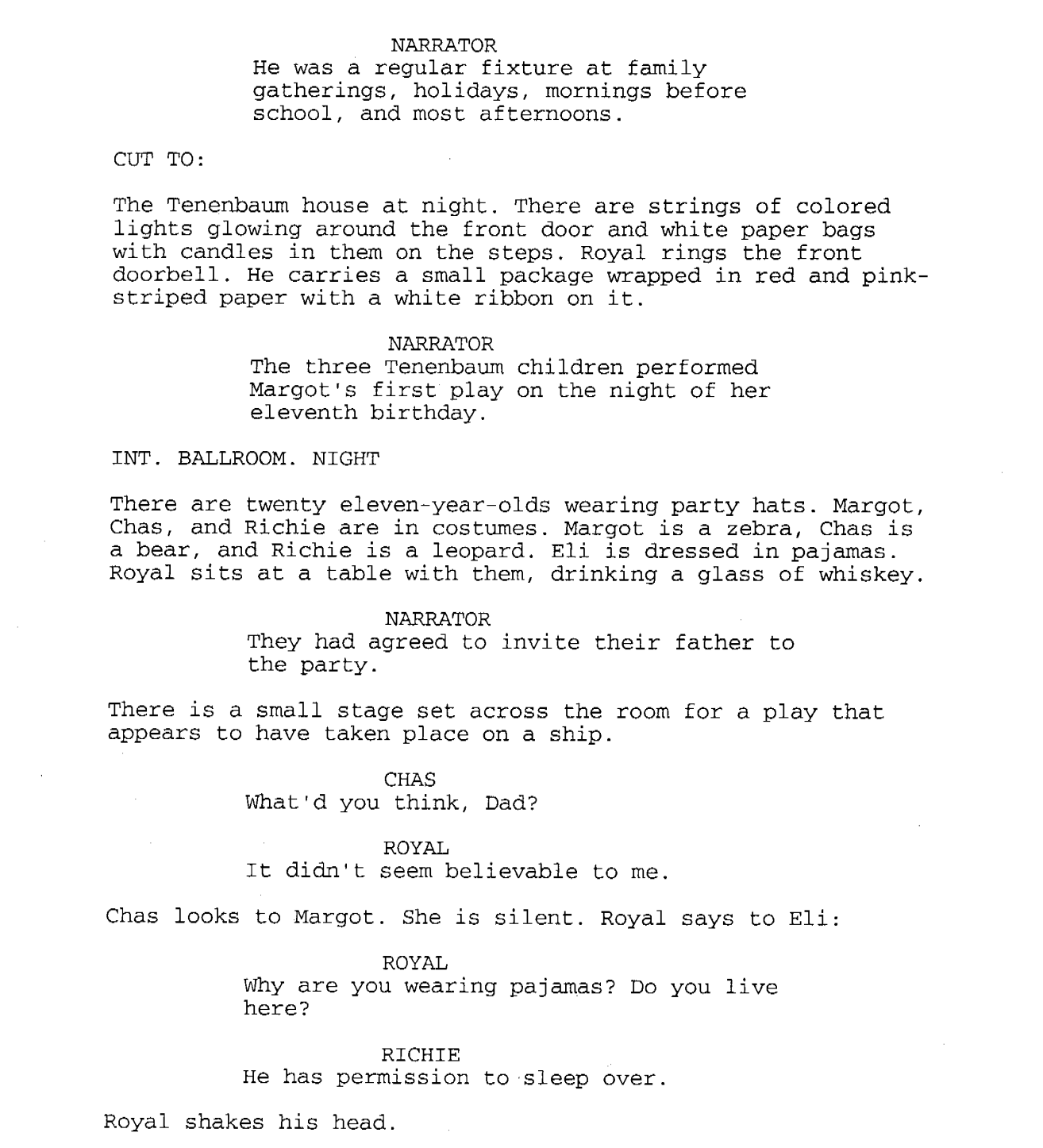WRITING YOUR SCREENPLAY WHILE SOCIAL DISTANCING: VOICE-OVER
LIBRARIAN (V.O.)
What a fraud I am! Who am I to impart any kind of
screenwriting wisdom? My foot hurts. AHHHHH!!!
The above is a bit of what we like to call voice-over narration — a practice in movies whereby a character or narrator talks or shares their thoughts OVER the action we see on screen.
Voice-over is likely derived from the choruses of ancient Greek theater, narration in novels, and the voices that provide omniscient commentary in documentaries, newsreels, and educational films.
Whether the narration in a movie (or TV show) comes from an unseen narrator or a character in the story, the purpose is exposition and perspective to help the audience better understand and feel the action. In the voice-over at the top of this post, you see my secret thoughts and feelings, but they’re different from the tone and content of this piece. The voice-over gives you extra insight.
A chorus in a play clarifies what a character is thinking when the character won’t say it or when we can’t see it. A narrator in a novel tells us what we see, hear, and sense, so we can form a picture in our mind’s eye. A voice-over in a documentary explains what we’re seeing to round out our understanding.
Voice-over gets a bad rap when it’s used for the sole purpose of telling us something the screenwriter/filmmakers have failed to SHOW us. Voice-over is sometimes used inelegantly as a fix for story holes.
A helpful metaphor is to think of voice-over like the garnish in a recipe. You can make yams WITHOUT cinnamon sprinkled on top, but cinnamon without the substance of the yams is NOT a meal. Voice-over is there to sweeten and specify once you have the main dish worked out.
NARRATOR
The librarian suddenly felt a pang of hunger and
a desire to listen to holiday music.
Voice-over can be delightful when done well, eliciting the same kind of conspiratorial joy of an actor in a play breaking the fourth wall and inviting us into their private thoughts. The emphasis here ought to be on “breaking” the wall or the rules/conventions. It’s not natural to situate ourselves inside a person’s head. Similarly, in films, which evoke a certain sense of naturalism, it can feel jarring to hear a storybook style narrator.
This week, we’ll look at scripts where voice-over plays a critical role. We’ll dissect the devices and methods used to make it feel effortless.
Before we get started, let’s clarify one thing. Voice-over is often delineated in scripts with the character’s NAME and (V.O.) in parentheses next to it. Writers take different liberties in writing voice-over, but this is the generally accepted practice. Voice-over is different from off-screen (O.S.) or off-camera (O.C.) dialogue. It’s the internal voice of an individual or it’s the voice of the narrator/God.
ABOUT SCHMIDT (2002)
Screenplay by Alexander Payne & Jim Taylor
Based on the novel by Louis Begley
The title character, Warren Schmidt, writes letters to a child he is sponsoring in Tanzania. His voice-over throughout the film is grounded and seamless because it’s his expressing himself through the letters. He’s basically reading us his writing.
BOYZ N THE HOOD (1991)
Written by John Singleton
This example works almost like a pre-cursor to Drunk History in that Tre re-counts a story to his father, and as he speaks, we flash to the memory on Crenshaw Blvd. The characters talk under Tre’s voice-over, which heightens the feeling of HIS telling the story, much like a drunk person explaining something on Drunk History.
It’s a fun, stylistically playful way to use voice-over in a movie.
IT’S A WONDERFUL LIFE (1946)
Screenplay by Frances Goodrich & Albert Hackett & Frank Capra
Contributions to screenplay by Michael Wilson and Jo Swerling
The vehicle for voice-over established right at the beginning of this movie is prayer. Prayer is very often internal, happening in a person’s head, so establishing a character’s voice-over as their prayers or talking to God (or any kind of deity or idol) is a great way to make voice-over natural.
The other component here is angels looking down at the main character George Bailey’s experiences on earth and giving commentary. By depicting them as stars, the script establishes that these heavenly voices are angels. Then, when the heavenly voices comment on the action, we know where they are talking from and why they are omniscient.
MEAN GIRLS (2004)
Screenplay by Tina Fey
Based on the book Queen Bees and Wannabes by Rosalind Wiseman
This is first-person, stream-of-consciousness voice-over narration.
This kind of narration helps us to get inside the head and relate more to the central character. It’s much like reading a novel written in the first-person. Here, the voice-over helps us to understand the subtext of the scene when Cady says she’s lost, but actually knows more than Aaron. Without the voice-over, we wouldn’t be fully privy to that irony.
THE ROYAL TENENBAUMS (2001)
Written by Wes Anderson & Owen Wilson
The Royal Tenenbaums establishes its “Narrator” by opening the movie with a book cover and dividing the story into chapters like a book, so it’s natural for a voice to be reading/telling us the story.
Notice that the writers never include the (V.O.) parenthetical next to the Narrator’s name. Rather voice-over is implied — and that’s okay. For purposes of this draft, we get it.
THE THIRD MAN (1950)
Screenplay by Graham Greene
Story by Graham Greene and Alexander Korda
What kind of voice-over post would this be if we didn’t include one example from Film Noir? Voice-over is a staple of the Film Noir genre — maybe because crime is typically at the center of the story and voice-over naturally feels like a character testifying or telling their “version” of the story (which is also possibly why the genre is known for unreliable narrators).
Note: This script sample features a third-person “Commentator” who refers to the main character of Holly Martens. For the American release of The Third Man, the studio made the filmmakers change the voice-over narration to first-person from Martens himself.
WAITING TO EXHALE (1995)
Screenplay by Terry McMillan and Ronald Bass
Based on the Novel by Terry McMillan
Waiting to Exhale opens with a radio announcer, taking calls, looking for stories, which is what grounds the candid voice-over from each of the film’s four protagonists and gives their words a confessional feel.
The technique in this particular scene is first-person / stream-of-consciousness. Like Mean Girls, it helps to vocalize the subtext and make the scene more hilarious.
WAITRESS (2007)
Written by Adrienne Shelly
The voice-over here is kind of like an aside in a stage play. Protagonist Jenna explains pie recipes as a means of working through her feelings.
As an aside to this blog post, it’s not surprising that movies like Waitress and Mean Girls both work well in their respective adaptations as Broadway musicals. Musical numbers are often a manifestation of a character’s inner thoughts and feelings — much like voice-over.
For additional questions about these and other scripts, as always, e-mail library@wgfoundation.org
Until next time, happy writing!












